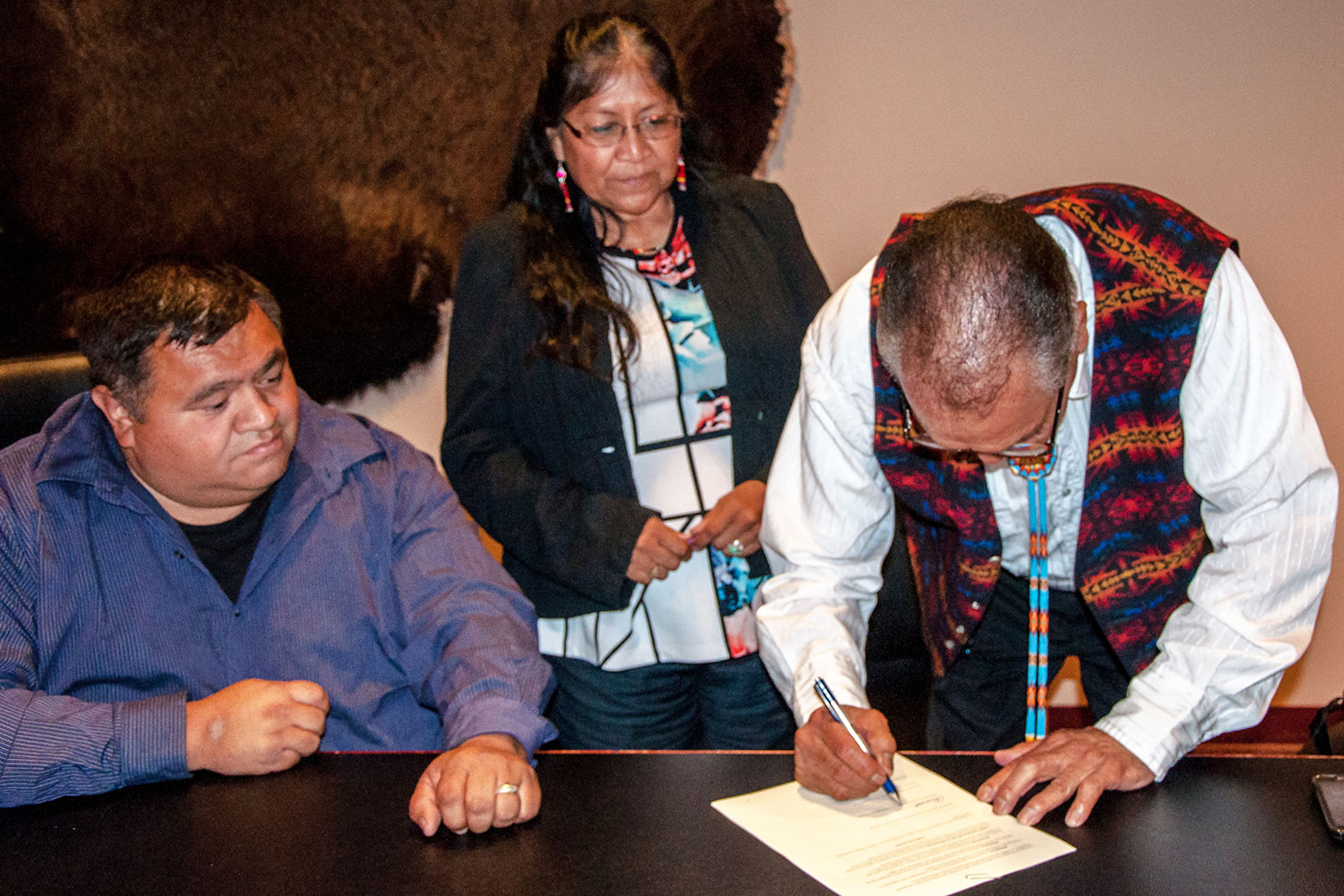At the last Tri-Ute Council meeting the council passed a resolution supporting presidential designation of a Bears Ears National Monument in Southeast Utah. Bears Ears region is a 1.9 million acre landscape that is sacred to many Southwest Native American tribes. The region is also believed to be home to more than 100,000 archeological sites.
On Tuesday, June 14 in Towaoc, Colo. Ute Mountain Ute Councilman Malcolm Lehi gave a history of the Inter-Tribal Coalition – Ute Mountain Ute, Ute Indian Tribe, Navajo Nation, Hopi Tribe and the Pueblo of Zuni – that was formed in the effort to conserve the Bears Ears cultural landscape. Structures and sites in the region have been vandalized, looted and desecrated over the years and with a designation the coalition hopes the region will be better protected.
Lehi asked Southern Ute to join the sister tribes and support the coalition’s mission to preserve Bears Ears.
“We are asking Southern Ute [Indian Tribe] to support us and other tribes that are asking President Obama to turn this into a National Monument,” Lehi said.
The coalition has been working on getting support from as many tribes as they can and requested the Tri-Ute Council’s support.
“It’s important that we do show support for Bears Ears,” Southern Ute Chairman, Clement J. Frost said. “Look at the ties that band us together as Native Americans; it’s important we continue to support things like this.”
The Tri-Ute Council took a vote and passed the resolution of support making it the first joint resolution passed by the Tri-Ute Council.
“History was made with this,” Lehi said. “Not just for us, it is for all tribal nations.”
The Tri-Ute Council also used the time to discuss the ongoing issue of providing services to Ute tribal members that reside on sister tribes’ reservations. The topic has been talked about but has had trouble catching on due to the changing Executive Offices of each tribe. The Tri-Ute Council heard from the Executive Offices of the three sister tribes for the first time last week.
“We got quite a bit of work to do yet,” Ute Mountain Executive Director Kermit Palmer said.
The Executives Officers must figure out how a budget will work; who will be in charge of the services on each reservation; and what the guidelines and protocols will be.
“We’ve heard it through the years; here are their needs. [Tribal members] would greatly appreciate if we came together as leaders to help them,” Ute Mountain Councilwoman, Priscilla Blackhawk-Rentz said.
Frost agreed stating, “It’s a good start … My focus is to be focused on the people. Focus on our peoples’ needs. What are the terms when they live away from their own people?”
Southern Ute Councilwoman, Amy J. Barry asked the Executive team to get the demographics of each reservation to see how many tribal members live on a fellow sister reservation. Doing so will help with the budgeting process, she said.
The Council also discussed the $75,000 collective commitment that History Colorado is requesting from the three Ute tribes to support the exhibits at the Ute Indian Museum in Montrose, Colo. – a $25,000 commitment from each tribe.
Chairman Frost, said the Southern Ute Indian Tribe needs more information from the Ute Museum on the expenditures before the tribe can agree to move forward with the commitment. The Tri-Ute Council agreed with Frost, and no decisions were made pending more information from History Colorado.
Also present at the meeting were tribal elders from the three Ute Tribes. The elders listened in on the meeting and used the meeting as a platform to provide some guidance to the council.
Ute Mountain Ute elder, Betty Howe, talked about language and urged the Tri-Ute Council to keep the youth and culture in mind when making decisions.
Ute Indian Tribe elder, Jonas Grant and his wife Joy, also gave a presentation to the Tri-Ute Council asking them to support the Shoshonean-Numic Language Reunion. The reunion is held annually and was formed when questions arose of tradition and origins of the Shoshone Tribes and the Comanche, and also the relationship of the Ute and Paiute Tribes.
“That’s part of our language,” Grant said. “That’s why we came to Tri-Ute to encourage you to send people to the reunion.”
Grant also said he would like to see a “Ute Nation” color guard come together. Grant talked passionately about the sister tribes supporting one another and would like to see more “Ute Nation” rather than the three tribes being separated.
Southern Ute elder, Judy Lansing also sat in on the meeting and said she feels leadership needs to include all the elders more.
“Get the elders involved,” she said. “They want to be involved to help and tell stories and feel good about themselves and the community.”
The next Tri-Ute Council meeting is scheduled to take place in Ignacio, Colo. during the Southern Ute Tribal Fair.

